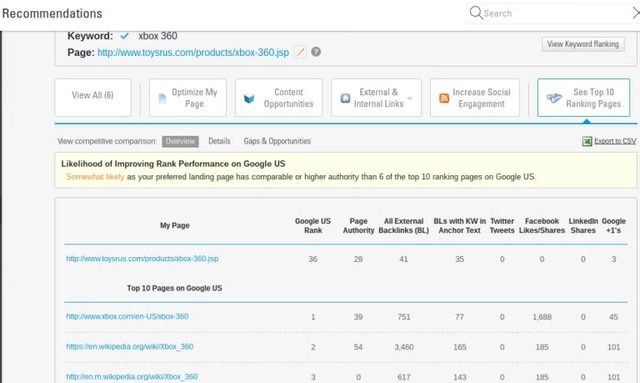With the growth of the Internet, the entire consumer purchasing process has changed - forcing SEO writing to the forefront of content marketing strategy. An estimated 67 percent of the customer journey now takes place digitally, with 81 percent of shoppers and 94 percent of B2B buyers saying that they conduct Internet research before purchasing a product. Customers use the Internet to learn about brands, products, and services that they might be able to use. They compare options and learn about the various potential solutions to their problems. For companies to succeed with these digital customers, they need to have a strong online presence. It is only by being visible in the channels that customers are using to search - such as organic search or social media - that brands have the ability to establish themselves to prospects. They will then be able to cast themselves as the reputable industry leader from whom consumers should make a purchase. SEO writing is a large part of developing that important reputation and brand reach. Strong writing can help organizations improve their ranking within the search algorithms while also being engaging for readers to encourage sharing and interaction.
SEO writing is a large part of developing that important reputation and brand reach. Strong writing can help organizations improve their ranking within the search algorithms while also being engaging for readers to encourage sharing and interaction.
What is effective SEO writing?
When you sit down to develop an effective piece of textual content, you want to write something that provides immediate value for the reader. It should not just be a regurgitation of everything else on the web. You want to add your own expertise and point of view so that readers have a reason to come back to you specifically to learn more. Your writing should help establish you as a trusted leader within your niche. You should demonstrate a keen insight into the blog topics that matter the most to your intended audience so that you can be there to answer their questions and address their needs. At the same time, your content needs to be developed with the search engine algorithms in mind. The piece needs to clearly communicate to the search engine the topic and value of your material. Google will be looking to understand how your piece fits into the greater digital ecosystem as well as where it fits into your site. This will provide clues and insight about where to display it on the SERPs and for what queries. This means placing carefully-selected, thoroughly-research keywords in certain areas, paying attention to your site structure and taking the time to balance your content with your SEO efforts. Your SEO writing strategy needs to be attentive to effectively communicating both with your target audience and with the search algorithm.
How do I develop effective SEO writing?
- Step 1: Determine the goal you want to accomplish with this particular piece.
You will not be able to effectively write and engage prospects if you do not know exactly what you want to accomplish with a particular piece of content. You should look at the outline of your ideal customers and their buyer journeys and know how you want this particular piece of content to fit into that funnel. For example, is this piece of content going to be an end-of-funnel piece that encourages people to make a purchase? It might have more product mentions and comparisons about why your brand is superior to competitors. On the other hand, if the content will be for the top of the funnel, it will likely focus more on being informative about the industry and less about your company in particular.
- Step 2: Review what others have written about the topic.
Considering that we produce 2.5 quintillion bytes of data every day, the vast majority of the conceivable topics available have been covered to at least some degree. By reviewing what the highest-ranking sites for your particular topic have developed, you will have a better idea of what people want to see when they search for this keyword. You can search for ways to improve upon what has already been created to maximize your potential ranking.

- Step 3: Create content that addresses the targeted audience’s need at this particular point in the buyer’s journey.
Once you know whom you are writing for and have an idea about effective strategies that will help you with this topic, it is time to develop the content. Seek to add your own unique perspective to the content so that customers see you as a trusted authority.
- Step 4: Be sure to provide depth while also making the content easy to scan.
While you do not want to compromise on the depth of your material, it is important to still make your piece easy to scan. Most people are not going read each word you produce individually, they will quickly look over the material to see how relevant your content is to their needs. You want to pay attention to your headlines and make sure they are clearly relevant to the topic that brought the person to your page. You also want to use listing features, such as bullet points or numbered lists to make your ideas easy to explore and retain. Optimal page word count is now believed to be around 1100.
- Step 5: Draft an effective title that draws people into your material.
An estimated 8 in 10 people will read your headlines but not go on to read your content. This gap is because brands do not make their headlines engaging enough. Their headlines do not effectively draw in customers and convince them that this will be the content that answers their needs. Using your keyword in your title helps to communicate your relevance. Using phrases such as ‘how to’, titles that indicate lists or words that otherwise pull in the reader will help you increase clicks. Generally keep your title around 70 characters or below to make sure all the words show up in the SERPs. Long titles that become like title tags can trigger Google to rewrite the title tag for the SERP.
- Step 6: Optimize the content with keywords.
Your content should also be optimized with the keyword, but be careful - overuse, also known as ‘keyword stuffing’ - is a damaging SEO writing practice. Instead, aim to have a keyword saturation around one to two percent and make sure that it is always used naturally throughout your piece.
- Step 7: Write an engaging meta description.
Although Google has indicated that they do not scan meta descriptions for ranking factors, that does not mean that this feature is obsolete. Meta descriptions influence how many people click through from the SERPs because they help to indicate the relevance of your content to the query. Writing a quality meta description that invites readers in so they can learn your valuable information will improve your clicks, your engagement and stickiness, and therefore your rank.
- Step 8: Distribute the content and measure your results.
Once the content has been written and optimized, you then need to distribute it to the people you think will be the most interested in the material. Use a variety of different platforms, such as your social media platforms and your email lists to reach the people most likely to read and engage with the writing. Measure your results throughout the process so that you see how the response of your audience maps to your predictions. Use this information to guide your future content production. Creating an efficient SEO writing strategy and creation process will be the cornerstone of improving your brand reach and creating a strong brand presence. Understanding how to improve your writing will help you boost your online marketing success.
Content Best Practices
Check out a recent piece on content marketing: A New Era of Content. The paper is based on industry research by BrightEdge and iProspect; it packs a number of content and online marketing best practices into 20 short pages.
